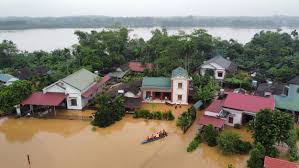Vietnam is revamping its flood management strategies after a year of relentless storms and record-breaking rainfall, which caused widespread destruction and estimated losses exceeding US$1.4 billion, according to The Associated Press.
Massive Investment to Bolster Resilience
The government announced plans to invest over US$6 billion through 2030 to strengthen resilience against extreme weather events. Key initiatives include the deployment of advanced early-warning systems, relocation programs for populations in high-risk zones, and the development of “sponge city” infrastructure designed to naturally absorb and manage excess water.
Adapting to Climate Change
Authorities emphasized that traditional flood-control methods are insufficient against the intensified rainfall and increased frequency of tropical storms driven by climate change. The new strategy integrates technological, ecological, and social measures to minimize both human and economic impacts.
Regional Model for Climate Adaptation
Experts suggest that Vietnam’s approach could serve as a model for other climate-vulnerable Southeast Asian nations, highlighting the importance of combining urban planning, disaster preparedness, and sustainable infrastructure to adapt to evolving environmental threats.
Phased Implementation Across the Country
The government plans to implement these initiatives in phases, prioritizing regions most affected by recent floods while gradually building long-term resilience nationwide. The overhaul underscores Vietnam’s commitment to protecting communities and strengthening national preparedness against climate-related disasters.

